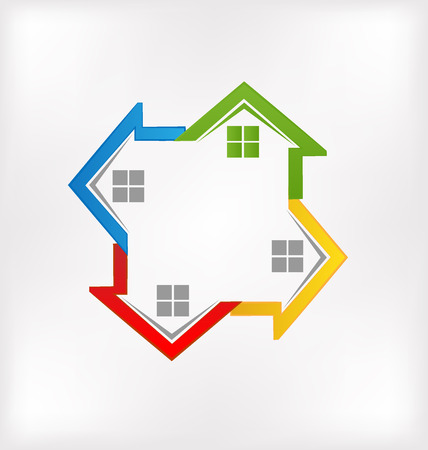Introduction to Smart Lighting Protocols
Smart lighting has become a popular feature in modern homes, offering convenience, energy efficiency, and even added security. But behind the scenes, these systems rely on specific communication protocols to function smoothly. Understanding these protocols is essential for anyone building or upgrading a smart home.
Smart lighting protocols are the languages that your smart bulbs, switches, hubs, and mobile apps use to talk to each other. Choosing the right protocol affects not only how reliable your system is but also how easy it is to expand and integrate with other devices in your home automation setup.
Why Smart Lighting Protocols Matter
When setting up a smart lighting system, it’s not just about picking the coolest-looking bulb or the app with the best reviews. The underlying protocol determines key factors like:
- Compatibility: Will your lights work with your existing smart hub or voice assistant?
- Range and Reliability: Can your lights communicate across larger areas without dropping signal?
- Power Consumption: Will the devices drain batteries quickly if they’re wireless?
- Network Congestion: Will using Wi-Fi lights slow down your internet?
Meet the Big Three: Zigbee, Z-Wave, and Wi-Fi
The most common smart lighting protocols in U.S. households today are Zigbee, Z-Wave, and Wi-Fi. Each comes with its own set of strengths and weaknesses depending on your needs and setup.
A Quick Comparison
| Protocol | Frequency | Main Strength | Main Weakness |
|---|---|---|---|
| Zigbee | 2.4 GHz | Creates a strong mesh network; great for larger homes | Can interfere with Wi-Fi networks using same frequency |
| Z-Wave | 908 MHz (U.S.) | Less interference; very reliable connection | Limited device compatibility compared to Zigbee or Wi-Fi |
| Wi-Fi | 2.4/5 GHz | No hub required; easy to set up with existing routers | Adds traffic to home network; not ideal for many devices |
This overview sets the stage for a deeper dive into each protocols pros and cons in upcoming sections. By understanding how these systems work at a basic level, youll be better equipped to make smart choices for your lighting—and your entire smart home setup.
2. Zigbee: Reliable and Scalable Networking
Zigbee is one of the most widely adopted wireless communication protocols in smart lighting and home automation. Known for its low power consumption and mesh networking capabilities, Zigbee offers a reliable solution for connecting multiple smart devices throughout your home.
What Makes Zigbee Unique?
Zigbee operates on the 2.4 GHz frequency band, similar to Wi-Fi, but its specifically designed for low-data-rate, low-power applications like smart lights, sensors, and switches. One of its standout features is mesh networking, which allows devices to pass signals through each other to extend range and improve reliability across your home.
Mesh Networking Benefits
- Self-healing network: If one device fails, the signal reroutes through other devices.
- Extended range: Each new Zigbee device strengthens the overall network coverage.
- Ideal for larger homes: More nodes mean better performance in multi-room setups.
Zigbee Compatibility with Smart Home Platforms
Zigbee plays well with many popular smart home ecosystems. Its commonly supported by hubs such as:
- Amazon Echo (with built-in Zigbee hub): Seamless control via Alexa.
- Samsung SmartThings: Offers broad device support and automation features.
- Home Assistant: Great for DIY users who want full customization.
Zigbee Pros and Cons at a Glance
| Pros | Cons |
|---|---|
| Reliable mesh networking improves connectivity | Requires a compatible hub or bridge for most setups |
| Low power usage is ideal for battery-operated devices | Limited direct compatibility with smartphones or Wi-Fi-only systems |
| Supports hundreds of devices on a single network | Potential interference on the crowded 2.4 GHz band |
Is Zigbee Right for You?
If youre planning a comprehensive smart lighting setup and want strong reliability across multiple rooms or floors, Zigbee is a solid choice. Just keep in mind that youll likely need a hub to get started, but the benefits of scalability and consistent performance often outweigh that extra step.

3. Z-Wave: Secure and Interoperable Communication
Z-Wave is another major player in the world of smart lighting protocols, especially popular for its strong emphasis on device interoperability and network security. It’s often compared to Zigbee due to their similar mesh networking capabilities, but Z-Wave has a few unique features that set it apart.
How Z-Wave Works
Z-Wave uses a low-energy radio frequency (typically 908.42 MHz in the U.S.) to communicate between devices. Unlike Wi-Fi or Bluetooth, which can become crowded with traffic from phones, laptops, and other gadgets, Z-Wave operates on a less congested frequency band. This helps reduce interference and improves reliability for smart home devices.
Mesh Networking Advantages
Like Zigbee, Z-Wave creates a mesh network where each device acts as a repeater, passing signals along to other devices. This extends the overall range of your smart lighting setup, especially helpful in larger homes.
Device Limitations and Range
One important thing to note is that Z-Wave networks support up to 232 devices per hub. While this is more than enough for most households, it’s still something to consider if youre planning an extensive smart home system. In terms of range, Z-Wave typically offers about 100 meters (328 feet) of open-air range between devices—longer than Zigbees average range.
Focus on Interoperability
Z-Wave has strict certification requirements through the Z-Wave Alliance, which means all certified devices are required to work seamlessly together, regardless of brand. This focus makes it easier for homeowners to mix and match devices without compatibility issues—a major plus for those building out a diverse smart lighting ecosystem.
Pros and Cons of Z-Wave
| Pros | Cons |
|---|---|
| Operates on a low-interference frequency | Fewer compatible products compared to Wi-Fi or Zigbee |
| Strong interoperability between certified devices | Requires a dedicated hub for operation |
| Longer range per device compared to Zigbee | Limited to 232 devices per network |
| Secure communication with AES-128 encryption | Slightly higher cost of compatible devices |
Z-Wave Device Ecosystem
The number of available Z-Wave smart lighting products is growing steadily, though not as fast as Wi-Fi-based options. However, because of the protocol’s solid reputation for reliability and security, many high-end smart home brands offer Z-Wave-compatible lights, switches, and sensors.
Best Use Case:
If you’re looking for a reliable and secure system that allows you to build a robust smart lighting setup over time—and you don’t mind using a hub—Z-Wave could be a great fit.
4. Wi-Fi: Convenient and High-Bandwidth Connection
Wi-Fi is one of the most popular options for smart lighting systems, especially for those just getting started with home automation. Since nearly every home already has a Wi-Fi network, adding smart bulbs or switches that connect via Wi-Fi can be quick and easy.
Advantages of Using Wi-Fi for Smart Lighting
- Easy Setup: Most Wi-Fi-enabled smart lights are plug-and-play. Just screw in the bulb, connect it to your existing Wi-Fi network through an app, and youre ready to go—no hub required.
- High Bandwidth: Wi-Fi supports higher data rates compared to Zigbee or Z-Wave. This allows for faster communication and better responsiveness, especially useful when controlling multiple lights or using advanced features like color changing or scheduling.
- Wide Compatibility: Since Wi-Fi is universal, many smart lighting brands support it, and it often integrates well with voice assistants like Amazon Alexa, Google Assistant, and Apple HomeKit.
Downsides of Using Wi-Fi
- Network Congestion: Adding several smart lights to your Wi-Fi network can slow things down, especially if your router is older or if you have many devices connected at once.
- Higher Power Consumption: Wi-Fi typically uses more power than Zigbee or Z-Wave. While this may not be a big deal for wired switches, it can drain batteries faster in wireless devices like motion sensors or remote controls.
- No Dedicated Network: Unlike Zigbee and Z-Wave, which operate on separate frequencies from Wi-Fi, all your devices share the same bandwidth. This can cause interference or connection drops if too many devices are active simultaneously.
Quick Comparison Table
| Feature | Wi-Fi |
|---|---|
| Setup Complexity | Simple – no hub needed |
| Bandwidth | High – good for data-heavy tasks |
| Power Usage | Higher – less ideal for battery-powered devices |
| Affected by Network Congestion? | Yes – shares bandwidth with other devices |
| Ecosystem Compatibility | Excellent – works with most major platforms |
If youre looking for convenience and already have a solid home network setup, Wi-Fi smart lighting might be the easiest way to start automating your home. However, its important to keep in mind how many devices your router can handle before performance starts to suffer.
5. Choosing the Right Protocol for Your Smart Home
When setting up a smart lighting system, one of the most important decisions youll make is choosing the right communication protocol. Zigbee, Z-Wave, and Wi-Fi are three of the most popular options, and each has its own strengths and limitations. To help you decide which one fits best with your home setup and lifestyle, we’ve broken down their key features side by side.
Comparison Table: Zigbee vs. Z-Wave vs. Wi-Fi
| Feature | Zigbee | Z-Wave | Wi-Fi |
|---|---|---|---|
| Range | Up to 100 feet indoors (extends via mesh) | Up to 100 feet indoors (extends via mesh) | Typically 50-150 feet depending on router strength |
| Network Type | Mesh network | Mesh network | Star network (direct to router) |
| Power Consumption | Low (ideal for battery-powered devices) | Very low (great for long-term battery use) | High (not ideal for battery devices) |
| Device Compatibility | Broad support but not all brands work together | More standardized; fewer compatibility issues | Widely compatible with existing devices and apps |
| Hub Requirement | Yes, requires a Zigbee-compatible hub or bridge | Yes, requires a Z-Wave hub or controller | No hub needed; connects directly to Wi-Fi router |
| Interference Risk | Possible interference with Wi-Fi (both use 2.4 GHz) | Less interference (uses sub-1 GHz frequency) | May slow down home network if overloaded |
| User Friendliness | Requires some tech knowledge for setup | Slightly easier than Zigbee but still needs setup time | Easiest to install and configure; plug-and-play style |
Zigbee: Best for Large Smart Homes with Many Devices
If you’re building a robust smart home system with many connected lights, sensors, and switches, Zigbee is a solid choice. Its mesh network allows signals to hop between devices, improving reliability over large areas. However, you’ll need a compatible hub to get started.
Z-Wave: Great for Reliable Connections with Minimal Interference
Z-Wave also uses a mesh network but operates on a different frequency than most household devices, reducing signal interference. Its a good option if youre concerned about Wi-Fi congestion or want a more standardized ecosystem. A Z-Wave hub is required.
Wi-Fi: Ideal for Simplicity and Small Setups
If you’re just starting out or only need smart control over a few lights, Wi-Fi may be the easiest route. It doesn’t require an extra hub — just connect your bulbs or switches to your existing wireless network. But keep in mind that too many Wi-Fi devices can slow down your internet speed.
Key Takeaway:
Your choice depends on how complex you want your smart home to be. For simple setups, Wi-Fi works fine. For larger systems or better reliability, consider Zigbee or Z-Wave — just remember they’ll need a hub.

